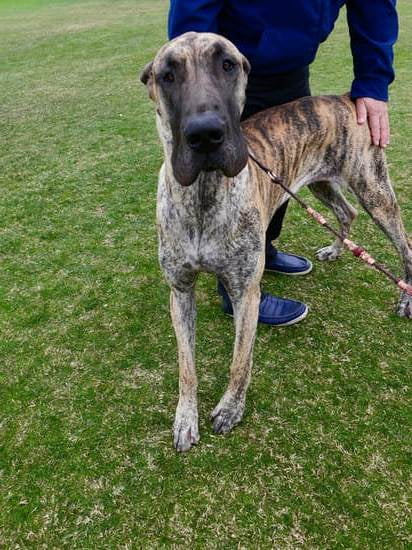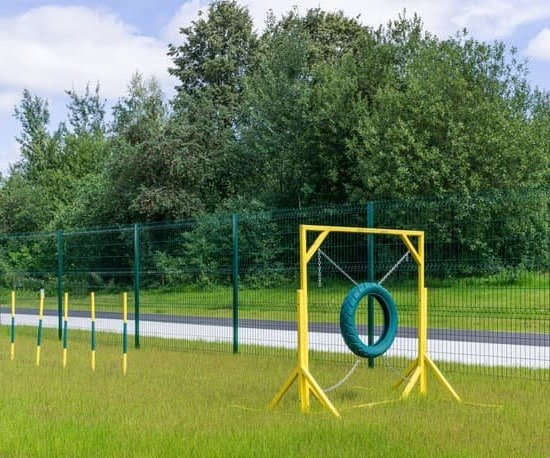Pocket Pitbulls, also known as Miniature Pitbulls or Pocket Bullies, are a smaller version of the American Pitbull Terrier. These compact and muscular dogs have gained popularity for their loyalty, intelligence, and affectionate nature. If you’re wondering how to train a Pocket Pitbull dog, it’s essential to understand their unique characteristics and be prepared to dedicate time and effort to their training.
Pocket Pitbulls are known for their strong-will and determination, which can make training them a rewarding yet challenging experience. It’s important to choose the right training methods that work best for your individual dog – whether it’s positive reinforcement techniques or more traditional methods. Consistency is key when it comes to training these intelligent and energetic dogs.
In this guide on how to train a Pocket Pitbull dog, we will explore the importance of setting up a training schedule, teaching basic commands and behavioral training, socialization tips for better interactions with other dogs and people, as well as crate training and potty training strategies. By understanding the breed’s needs and behaviors, you can establish a strong bond with your Pocket Pitbull through effective training techniques.
Choosing the Right Training Methods for Your Pocket Pitbull
Pocket Pitbulls are a unique and loving breed, known for their loyalty and affection towards their families. When it comes to training these adorable dogs, one of the key decisions you must make is choosing the right training method. Positive reinforcement and traditional training are two popular approaches that can be effective in teaching your Pocket Pitbull good behavior and commands.
Positive reinforcement focuses on rewarding your Pocket Pitbull for desired behaviors with treats, praise, or toys. This method emphasizes the importance of encouraging and reinforcing good actions rather than punishing unwanted behaviors. By using positive reinforcement, you can create a strong bond with your dog based on trust and mutual respect. It is a gentle yet effective way to teach your Pocket Pitbull how to behave properly.
On the other hand, traditional training relies on correction-based techniques such as leash corrections or verbal reprimands to address undesirable behaviors. While this method may work for some dogs, it can be harsh and potentially damaging to the relationship between you and your Pocket Pitbull.
Instead of instilling fear or intimidation, positive reinforcement promotes a positive learning experience for your furry companion. Ultimately, the choice between positive reinforcement and traditional training depends on what aligns best with your dog’s personality and needs.
When considering how to train a Pocket Pitbull dog, it is essential to assess which training method will be most effective for your pet’s temperament and learning style. Both positive reinforcement and traditional training have their merits, but the key is to be consistent in whichever approach you choose. By being patient, understanding, and using the right training methods, you can help your Pocket Pitbull become a well-behaved and obedient companion.
| Training Method | Description |
|---|---|
| Positive Reinforcement | Rewards good behavior with treats, praise, or toys |
| Traditional Training | Relies on correction-based techniques like leash corrections or verbal reprimands |
Setting Up a Training Schedule
Setting up a consistent training schedule is crucial when it comes to training a pocket pitbull. These dogs thrive on routine and structure, so having a consistent schedule will help them understand what is expected of them and reinforce good behavior. In this section, we will discuss the importance of a training schedule and provide tips on how to create one that works for you and your pocket pitbull.
Benefits of a Training Schedule
Having a set training schedule for your pocket pitbull will not only help in teaching them commands and manners but also in building a strong bond between you and your dog. Consistency in training allows your pocket pitbull to understand what behavior is expected from them, leading to better obedience and less confusion. Furthermore, a structured training routine can help address any behavior problems early on before they become more challenging to correct.
Tips for Creating a Training Schedule
When establishing a training schedule for your pocket pitbull, consider factors such as their age, energy level, and attention span. It’s important to keep training sessions short (about 10-15 minutes) but frequent throughout the day to maintain their interest and avoid burnout. Additionally, make sure to incorporate playtime, exercise, feeding times, and rest into their daily routine to ensure they are well-rounded and happy companions.
Consistency Is Key
Consistency is key when it comes to training any dog, especially a pocket pitbull. Make sure to stick to the established schedule as closely as possible and be patient with your dog as they learn. Remember that every dog learns at their own pace, so don’t get discouraged if progress seems slow at first. With dedication and consistency in training, you will see positive results in no time.
Basic Commands and Behavioral Training
Pocket Pitbulls are known for their intelligence and eagerness to please, which makes them highly trainable. When it comes to teaching your Pocket Pitbull essential commands and manners, positive reinforcement is key. This method focuses on rewarding good behavior rather than punishing bad behavior. Positive reinforcement can include treats, praise, or toys as rewards for obeying commands correctly. This creates a positive association with training and encourages your Pocket Pitbull to continue learning.
One of the first commands you should teach your Pocket Pitbull is “sit.” This command is relatively easy to teach and can be used in various situations to keep your dog under control. To train your Pocket Pitbull to sit, hold a treat close to their nose and move it slowly upwards.
As their head follows the treat, their bottom will naturally lower into a sitting position. Once they are seated, give them the treat and praise them enthusiastically. Repeat this process several times until they start sitting without the need for guidance.
In addition to “sit,” other essential commands like “stay,” “come,” “down,” and “heel” are important for keeping your Pocket Pitbull safe in different situations. Consistent training sessions that are short but frequent will help reinforce these commands effectively. Remember to be patient, consistent, and use positive reinforcement throughout the training process. With dedication and practice, your Pocket Pitbull will master these essential commands and develop proper manners that make them a joy to be around.
| Pocket Pitbull Training | Example Data |
|---|---|
| Positive Reinforcement | Reward good behavior with treats or praise |
| Sit Command Technique | Use treats to guide into sitting position |
| Consistent Training Schedule | Short but frequent sessions for effective learning |
Socialization Tips
Pocket Pitbulls, also known as Miniature Pitbulls, have a reputation for being loyal and affectionate dogs. However, proper socialization is crucial to ensure that they interact well with other dogs and people. Socializing your Pocket Pitbull from a young age will help prevent behavioral issues and make them more comfortable in various situations.
Early Exposure to Different Environments
To socialize your Pocket Pitbull effectively, expose them to different environments at an early age. Take them for walks in the park, to pet-friendly stores, and introduce them to new sights and sounds. This exposure will help your dog feel more comfortable and confident in unfamiliar settings.
Positive Interactions With Other Dogs
Another essential aspect of socialization is ensuring that your Pocket Pitbull has positive interactions with other dogs. Arrange playdates with friendly, well-behaved dogs to allow your Pocket Pitbull to learn appropriate social cues and behaviors. Supervise these interactions closely to prevent any aggressive behavior and step in if necessary.
Training Classes and Professional Help
Consider enrolling your Pocket Pitbull in training classes or seeking help from a professional trainer to aid in their socialization. These classes can provide structured opportunities for your dog to interact with other dogs under supervision. Trainers can also offer guidance on how to train a Pocket Pitbull dog properly and address any behavior issues that may arise during socialization efforts. Training professionals can be valuable resources in helping you navigate the process of socializing your Pocket Pitbull effectively.
Crate Training and Potty Training
To begin crate training your Pocket Pitbull, choose a crate that is appropriately sized for them – not too big that they can use one end as a bathroom area, but not too small that they feel cramped. Introduce the crate gradually by leaving it open with comfortable bedding inside so your dog can explore and associate it with positive experiences.
Gradually increase the amount of time your dog spends in the crate, making sure to reward calm behavior with treats and praise.
When it comes to potty training, take your Pocket Pitbull outside frequently – after waking up, after meals, after playtime, and before bedtime. Use consistent commands like “go potty” to associate the act with the command. When your dog eliminates outside, be sure to reward them immediately with treats and praise.
If accidents happen indoors, clean up thoroughly without punishing your dog; instead, focus on reinforcing good behavior when they go outside. With patience and a consistent schedule, your Pocket Pitbull will learn how to properly relieve themselves in the appropriate areas.
Addressing Behavior Problems
When it comes to training a Pocket Pitbull, addressing behavior problems is an essential aspect of ensuring that your furry friend is well-behaved and happy. Common issues that may arise in Pocket Pitbulls include aggression and separation anxiety. It’s important to approach these problems with patience, consistency, and understanding of the breed’s unique characteristics.
Aggression in Pocket Pitbulls can be a result of various factors such as fear, lack of socialization, or past experiences. To address aggression in your Pocket Pitbull, it is crucial to seek professional help from a certified dog trainer or behaviorist.
They can assess the root cause of the aggression and provide you with a tailored training plan to help your dog overcome this behavior issue. Remember that punishment-based techniques are not recommended when dealing with aggression as they can escalate the problem.
Separation anxiety is another common issue among Pocket Pitbulls, who are known for their loyalty and attachment to their owners. To help your furry companion cope with separation anxiety, gradually desensitize them to your absence by practicing short departures and gradually increasing the time you’re away.
Providing mental stimulation through interactive toys or puzzles can also help alleviate anxiety when you’re not around. Additionally, creating a safe space for your Pocket Pitbull with comfortable bedding and familiar scents can provide a sense of security during times of separation.
Advanced Training Techniques
When it comes to training a Pocket Pitbull, advancing beyond basic commands and behavioral training can enhance your dog’s skills and mental stimulation. Incorporating tricks and agility training into your routine can help strengthen the bond between you and your furry companion while providing physical exercise and mental challenges.
To kickstart your Pocket Pitbull’s journey into advanced training, consider starting with simple tricks like “shake,” “roll over,” or “play dead.” These tricks not only entertain but also engage your dog’s mind as they learn to follow different commands and actions. Utilize positive reinforcement techniques such as treats, praise, and playtime to encourage good behavior and consistent performance.
Agility training is another fantastic way to boost your Pocket Pitbull’s confidence, coordination, and physical abilities. Setting up a mini agility course in your backyard or local park with obstacles like jumps, tunnels, weave poles, and A-frames can provide an exciting challenge for your dog.
Use clicker training or verbal cues to guide your Pocket Pitbull through the course step by step. Make sure to adjust the difficulty level gradually according to your dog’s progress and skill level.
As you delve into advanced training techniques with tricks and agility training, remember that patience, consistency, and positive reinforcement are key components of successful training sessions. Keep sessions short and fun to prevent boredom or frustration for both you and your Pocket Pitbull.
With dedication, perseverance, and a bit of creativity in teaching new tricks and navigating agility courses, you’ll be amazed at how quickly your pocket pitbull dog can learn new skills while having a blast in the process.
Incorporating these advanced training techniques will not only keep your Pocket Pitbull physically fit but also mentally stimulated – leading to a well-rounded companion eager for more challenges ahead.
Maintenance and Continued Training
In conclusion, training a Pocket Pitbull requires dedication, patience, and consistency. By understanding the breed’s characteristics and choosing the right training methods, such as positive reinforcement, owners can effectively train their dogs. Setting up a training schedule helps establish routine and structure for both the owner and the dog, leading to successful training outcomes.
Basic commands and behavioral training are essential for teaching your Pocket Pitbull good manners and obedience. Socialization tips ensure that your dog is well-adjusted to different environments and people. Crate training and potty training are important aspects of housebreaking your Pocket Pitbull, while addressing behavior problems like aggression or separation anxiety requires careful attention and professional help if needed.
For those looking to take their Pocket Pitbull’s training to the next level, advanced techniques such as tricks and agility training can provide mental stimulation and physical exercise. Maintenance and continued training are crucial for reinforcing good behavior in your Pocket Pitbull over time. By following these tips on how to train a Pocket Pitbull dog, owners can enjoy a well-behaved companion for years to come.
Frequently Asked Questions
Are Pocket Pitbulls Easy to Train?
Pocket Pitbulls can be easy to train with the right approach. Like any other breed, consistency, positive reinforcement, and patience are key to their success in obedience training and socialization.
Are Pocket Bullies Easy to Train?
Pocket Bullies, like any dog breed, require consistent training efforts. With proper training techniques, these intelligent and eager-to-please dogs can learn commands and behavior expectations effectively.
What Is the Behavior of a Pocket Pitbull?
The behavior of a Pocket Pitbull can vary depending on factors such as genetics, socialization, and training. Generally, they are known to be loyal, affectionate, protective, and energetic dogs that thrive on human companionship. Proper socialization from an early age can help shape a well-rounded and well-behaved Pocket Pitbull.

Welcome to the blog! I am a professional dog trainer and have been working with dogs for many years. In this blog, I will be discussing various topics related to dog training, including tips, tricks, and advice. I hope you find this information helpful and informative. Thanks for reading!





